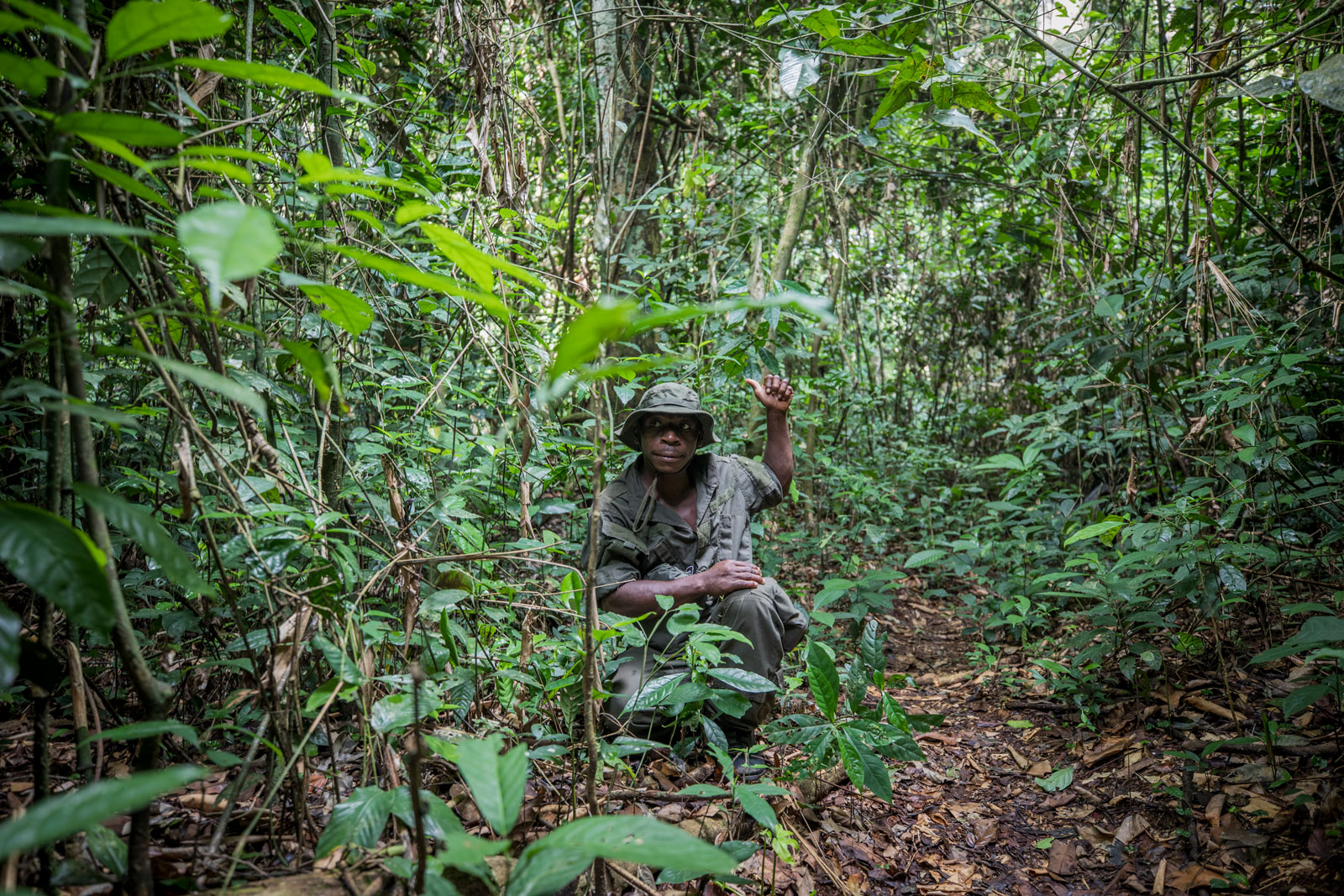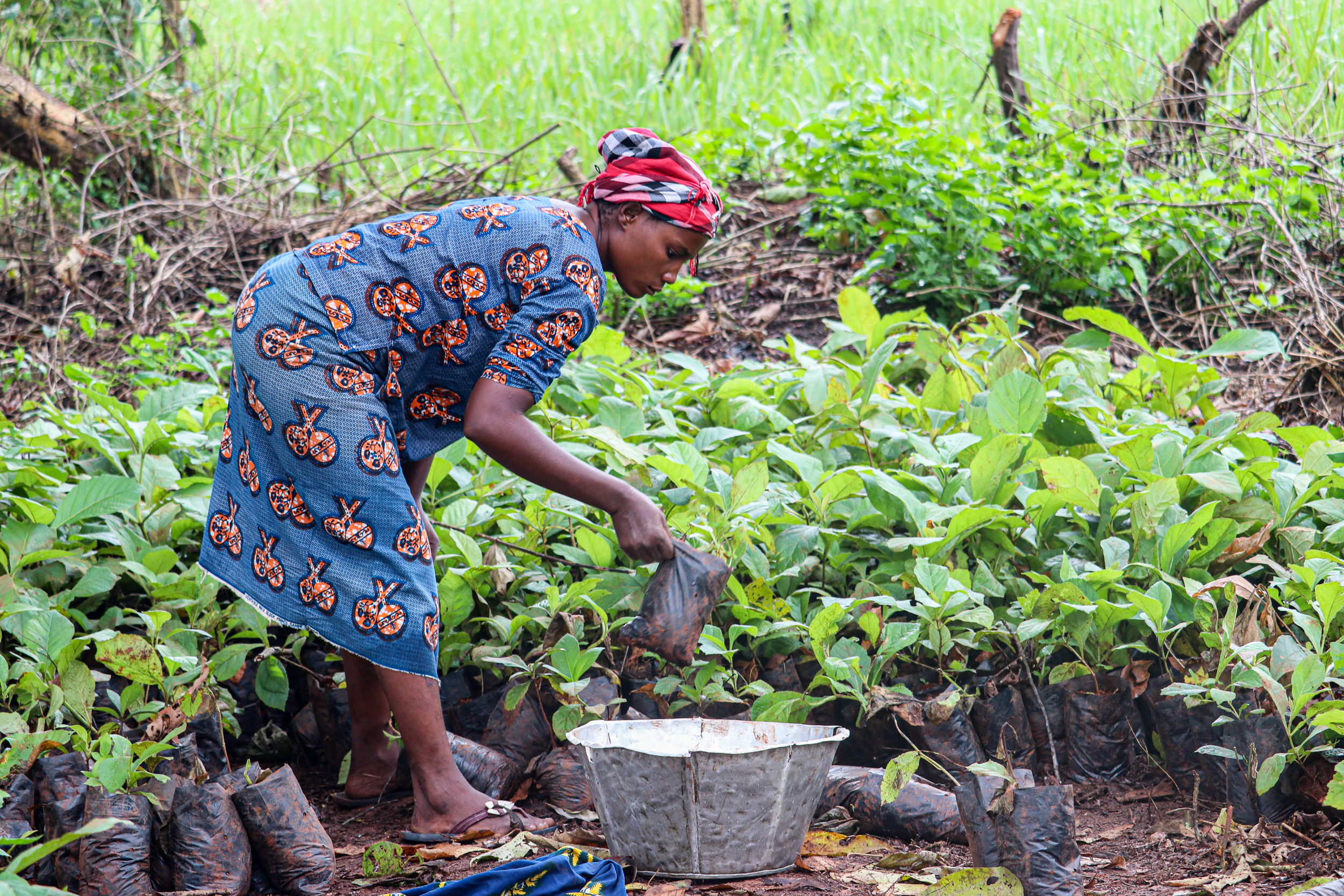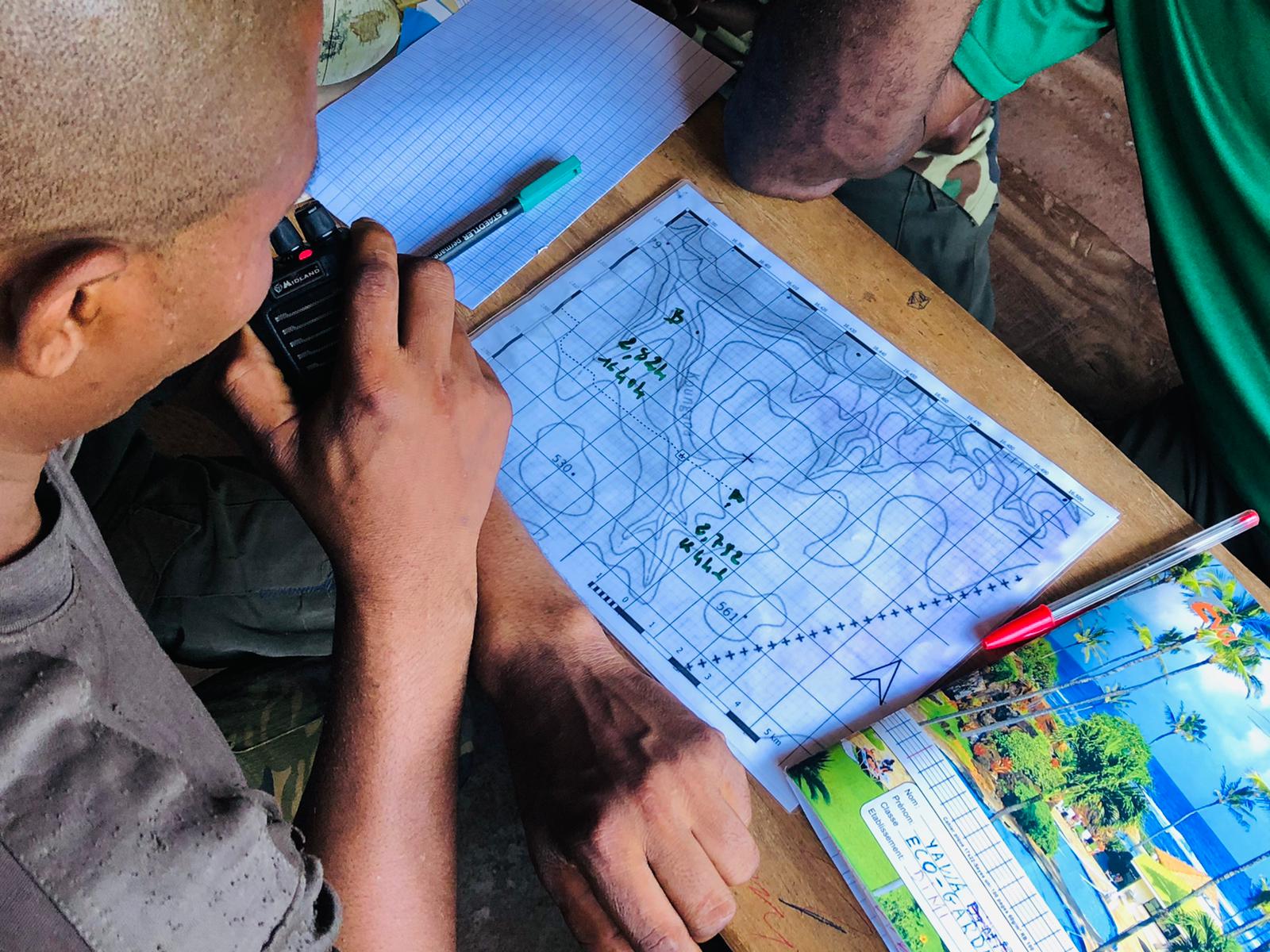
In spring 2021, we finally continued with training the ecoguards in Dzanga-Sangha Protected Areas (DSPA).
Of the more than 100 ecoguards working for the park, all of them have received the Level 1 training, which also includes basic modules on human rights.
Now, we started with the Level 2 training, which had been developed especially for the ecoguards in DSPA. It covers in-depth knowledge of tracking, reconnaissance, navigation, , conflict management, human rights, legal aspects, community liaison and first aid.
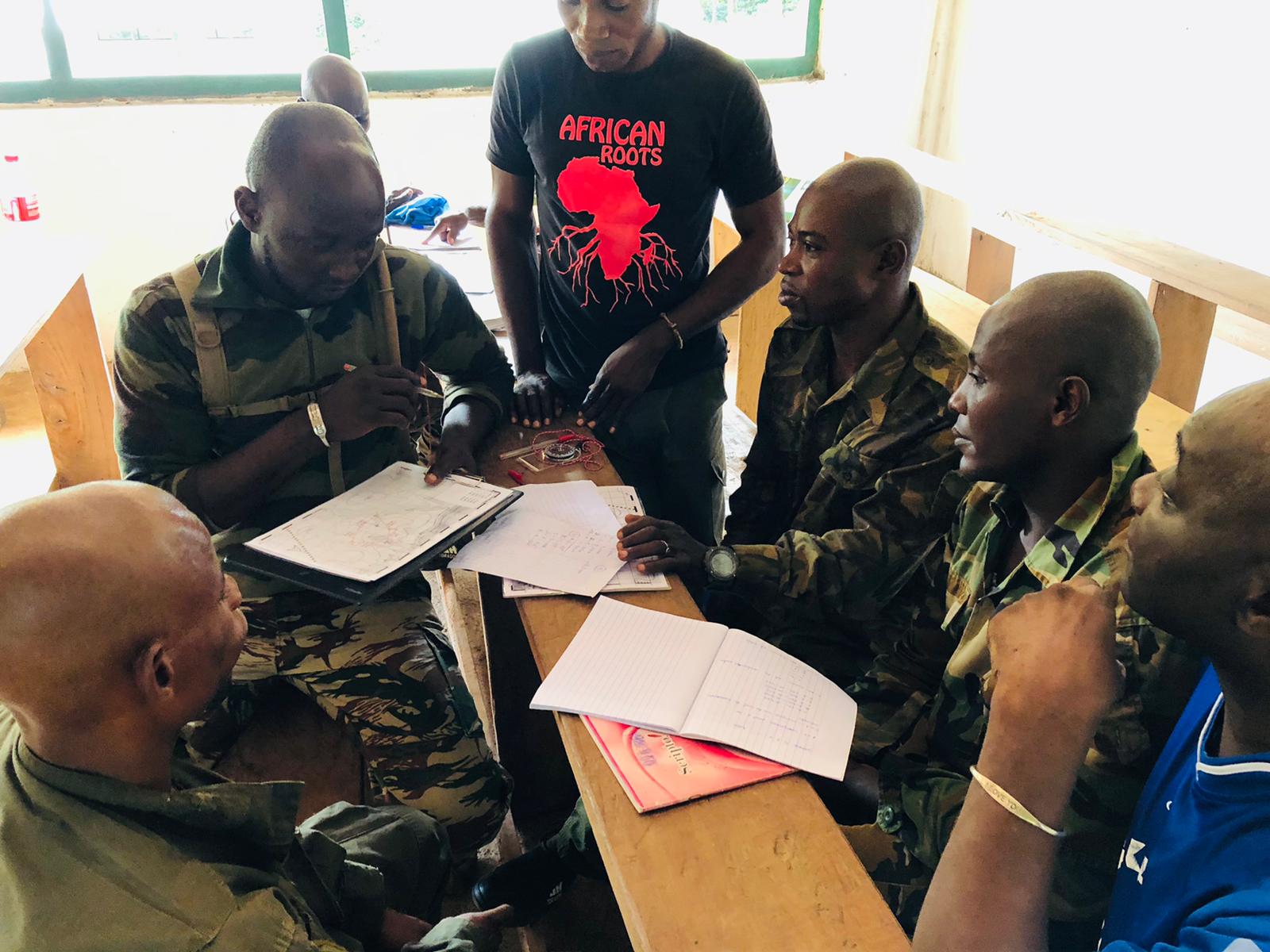
Often, the training starts in the classroom. Then there are field exercises and finally the training is practiced during the field patrols
Aaron Porter works for Chengeta Wildlife and conducts the trainings for the ecoguards in Dzanga-Sangha. He tells us how the training is structured and what they experience during the patrols in the deepest rainforest.
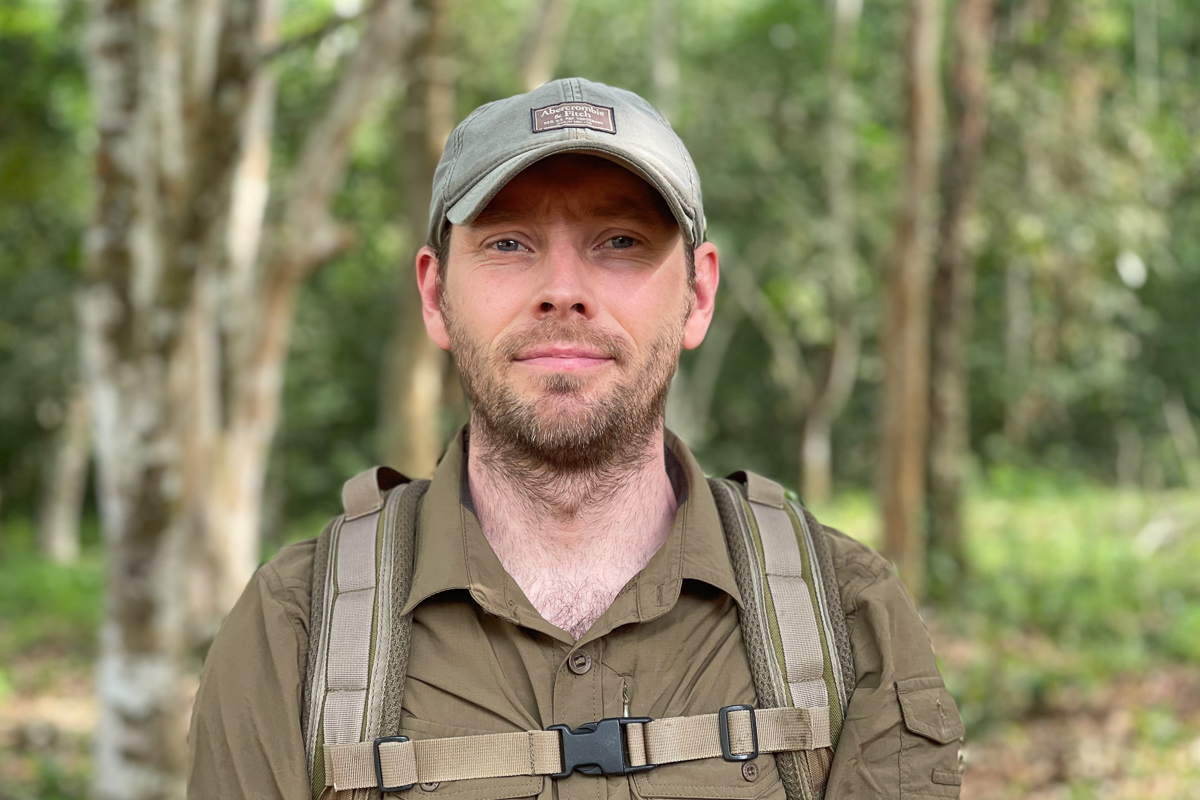
Strength training and field exercises at the beginning
Every morning at 6am the ecoguards do a physical training session. Each session is different, to maintain diversity and to promote strength, endurance, flexibility, balance and coordination at the same time.
Obstacle course best performance
The final event of the first part of the training is an individual best performance on a 1km jungle obstacle course that includes a river course, hurdles, hill climbs, a 20-metre crawl and some other natural obstacles such as fallen trees and roots that need to be overcome.
Here Yoann, one of the Chengeta instructors, overcomes the final obstacle with some encouragement from the other ecoguards.
To celebrate the completion of the exhausting obstacle course, the ecoguards sing a song while doing push-ups.
Encounters during the live patrols
A clearing in the jungle is called a bai. Elephants often visit these areas, sometimes in groups, to eat lush grass and access the mineral-rich clay and streams.
While observing a bai during a live patrol, we were lucky enough to see this forest elephant doing just that.
In the picture you can see an ecoguard, who adapts very well to its surroundings in order not to be discovered. It is not uncommon for ecoguards to observe gorillas who pass by without noticing that there are 8-10 ecoguards within 5 metres.

At night in the hammock
Overnight, we have to choose our position very well in order not to be hit by falling branches or trees while sleeping. Branches and even whole trees can fall to the forest floor sometimes. At dusk, the jungle erupts with an incredible sound of insects. The sounds and calls of the animals, can be heard throughout the night. From our hammocks, we listen to elephants moving through the forest and various nocturnal animals such as frogs and smaller primate species. Dawn is usually very quiet, but sometimes we hear colobus monkeys high in the canopies, their calls are very loud.
Welcome to the base camp
When we finally arrive back to the base after a 3-day patrol, we are sometimes greeted by hundreds of thousands of butterflies. They love to drink our sweat, whether it comes from our bags, clothes or skin.
In April and May, 2 groups of 20 ecoguards each have already been trained.
The trainings are financially supported by WWF Germany and the FTNS, who are very grateful for the high commitment of Chengeta Wildlife to effective anti-poaching work.
